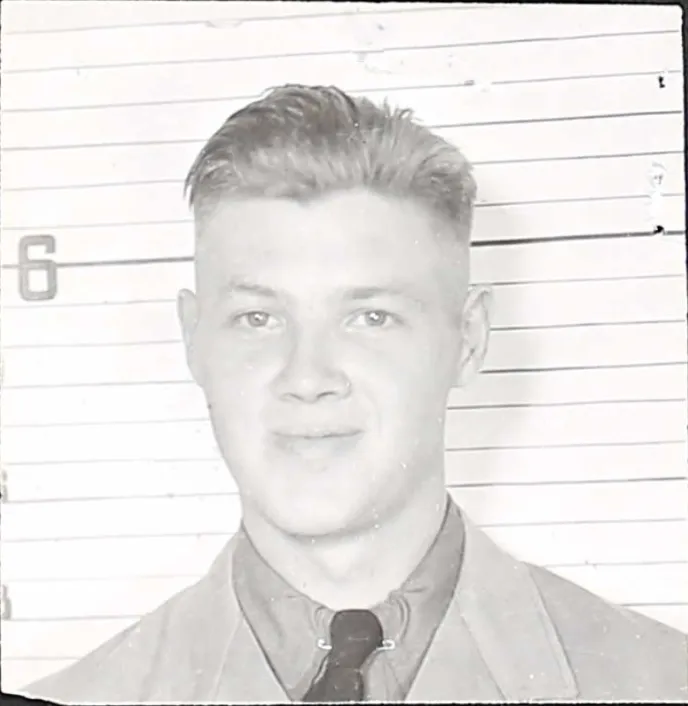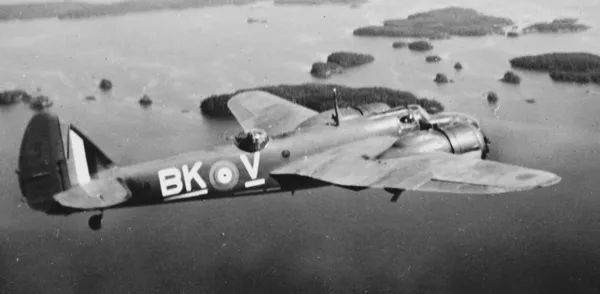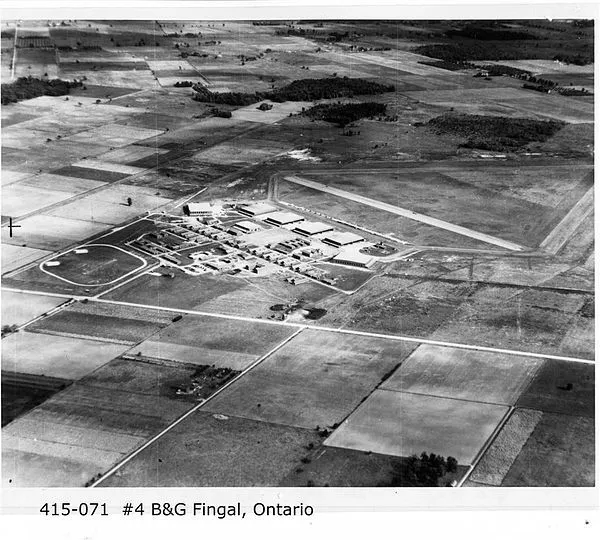Allan, James Davidson
Killed in Flying Accident 1945-01-20


Birth Date: 1921-December-15
Born:
Son of Samuel and Catherine Allan, of Toronto, Ontario.
Home: Toronto, Ontario
Enlistment:
Enlistment Date: Unknown
Service
RCAF
Unit
4 BGS- Bombing & Gunnery School
Base
RCAF Stn. Fingal, Ontario
Rank
Flying Officer
Position
Flying Officer
Service Numbers
J/29114
Home
 Toronto, Ontario
Toronto, Ontario
First Burial
 Pine Hills Cemetery, Toronto, Ontario
Pine Hills Cemetery, Toronto, Ontario
This incident involved multiple aircraft:
- Bolingbroke Mk. IVT Serial: 10019
- Bolingbroke Mk. IVT Serial: 10213
All the above aircraft in the above list are referenced in this report.
Bolingbroke 10019
Bristol Bolingbroke

Fairchild Bolingbroke Mk. IV, RCAF (Serial No. 9118), coded BK-V, No. 115 (Bomber Reconnaissance) Squadron, Patricia Bay, British Columbia, 1942.
The Bristol Fairchild Bolingbroke was a maritime patrol aircraft and trainer used by the Royal Canadian Air Force during the Second World War. Built by Fairchild-Canada, it was a license-built version of the Bristol Blenheim Mk IV bomber.
In 1935, the British Air Ministry issued Specification G.24/35 to procure a coastal reconnaissance/light bomber to replace the Avro Anson. Bristol proposed the Type 149, based on its Blenheim Mk I, with Bristol Aquila engines to give greater range. While the Air Ministry rejected this proposal, a Blenheim Mk I, retaining its Mercury VIII engines, was converted as a Type 149 (Blenheim Mk III) for the general reconnaissance role.The nose was lengthened to provide more room for the bombardier, with the upper left surface of the nose being scooped out to maintain pilot visibility during takeoff and landing.
The longer range also fulfilled a Canadian requirement for a maritime patrol aircraft. Consequently, Fairchild Aircraft Ltd. (Canada) of Quebec started production of the Blenheim Mk IV as the Bolingbroke (the originally intended name for the Blenheim IV). This type was nicknamed the "Bolly". After a small run of aircraft constructed to British specifications, as the Bolingbroke Mk I, Fairchild switched production to the Bolingbroke Mk IV with Canadian and American instruments and equipment. These versions also included anti-icing boots and a dinghy. One of the early Mk IV variants was the Bolingbroke Mk IVW which was powered by two 825 hp (615 kW) Pratt & Whitney SB4G Twin Wasp Junior engines. Incapable of maintaining altitude on one engine, the normal bomb load was reduced to 500 pounds on these aircraft to compensate for the low engine power. The most-produced variant was the Bolingbroke Mk IVT trainer, of which 457 were completed. A total of 626 Bolingbrokes were produced.Wikipedia
 Bolingbroke - Kestrel Publications
Bolingbroke - Kestrel Publications
4 BGS (4 Bomb and Gunnery School)
The Bombing and Gunnery School (B&GS) offered instruction in the techniques of bomb aiming and aerial machine gunnery to Air Observers, Bomb Aimers, and Wireless Air Gunners. These schools required large areas to accommodate their bombing and gunnery ranges, and were often located near water. The Avro Anson, Fairey Battle, Bristol Bolingbroke, and Westland Lysander were the standard aircraft used at B&GS schools.

Bolingbroke 10019
Bolingbroke Mk. IVT 10019
Transferred to No. 1 AC on 15 Jan 1945. Assigned to No. 4 B&GS, Fingal, ON. On 20 Jan 1945, this a/c collided in mid-air with #10213 and crashed while flying in formation for a gunnery exercise; The crew, Flying Officer J. Allan and trainee AG LACs L. Watt and W. Neville (both RAAF) were killed. #10213 landed safely, and Warrant Officer Class 2 R. Eaton and two student AGs were unhurt. This was the fifth such collision involving RCAF Bolingbrokes.. Some of this information from plaque on Cenotaph at Fingal.1942-11-12 Taken on Strength No. 1 Training Command 2019-08-20
1944-March-13 Accident: 4 Bomb & Gunnery School Loc: Aerodrome Names: Govier | Jubenville | Kendall | Lampart | Magee | Mallette | Paton | Pollard | Robinson
1944-November-30 Accident: 4 Bomb & Gunnery School Loc: Aerodrome Names: Harper
1945-January-20 Accident: 4 Bomb & Gunnery School Loc: Inwood Ontario Names: Allan | Eaton | Jarvis | Mullins | Neville | Watt
1945-02-28 Struck off Strength Struck off, reduced to spares and produce by No. 6 Repair Depot 2019-08-20
Bolingbroke 10213
Bolingbroke Mk. IVT 10213
Delivered with Mercury XX STAR engines. Delivered to long term storage with No. 1 TC. Assigned to No. 4 B&GS at Fingal, ONon 4 Jun 1943, arriving there on 25 Jun 1943. On 20 Jan 1945, #10019 collided in mid-air with #10213 while flying in formation for a gunnery exercise. #10019 crashed and Flying Officer J. Allan and trainee AG LACs L. Watt and W. Neville (both RAAF) were killed; #10213 landed safely, Warrant Officer Class 2 R. Eaton and two student AGs were unhurt. This was the fifth such collision involving RCAF Bolingbrokes. The airframe was formally transferred to No. 1 AC on 15 Jan 1945. To No. 6 RD for scrapping on 15 Feb 1945.1943-05-31 Taken on Strength No. 1 Training Command 2019-08-20
1944-May-20 Accident: 4 Bomb & Gunnery School Loc: Lake Erie Names: Currant | Lowrie | Northgrave | Ogden
1945-January-20 Accident: 4 Bomb & Gunnery School Loc: Inwood Ontario Names: Allan | Eaton | Jarvis | Mullins | Neville | Watt
1945-02-26 Struck off Strength Struck off, reduced to spares and produce 2019-08-20
 Canadian Virtual War Memorial
Canadian Virtual War Memorial Commonwealth War Graves Commission
Commonwealth War Graves Commission www.findagrave.com
www.findagrave.com

 Wikipedia Bolingbroke Bomber
Wikipedia Bolingbroke Bomber Harold A Skaarup Web Page
Harold A Skaarup Web Page Bolingbroke Bomber WWII
Bolingbroke Bomber WWII Commonwealth Air Training Plan Museum - 4 BGS History
Commonwealth Air Training Plan Museum - 4 BGS History